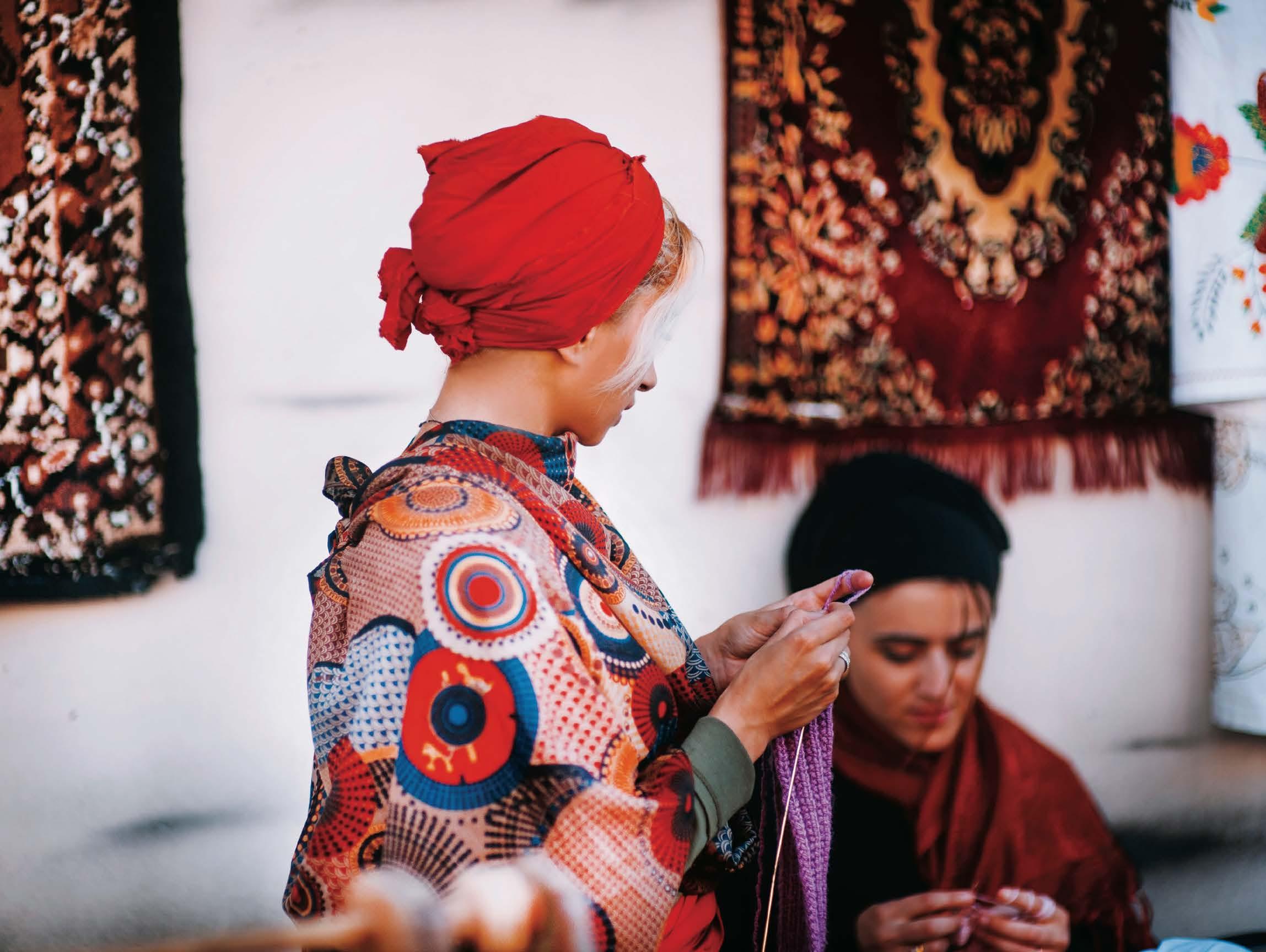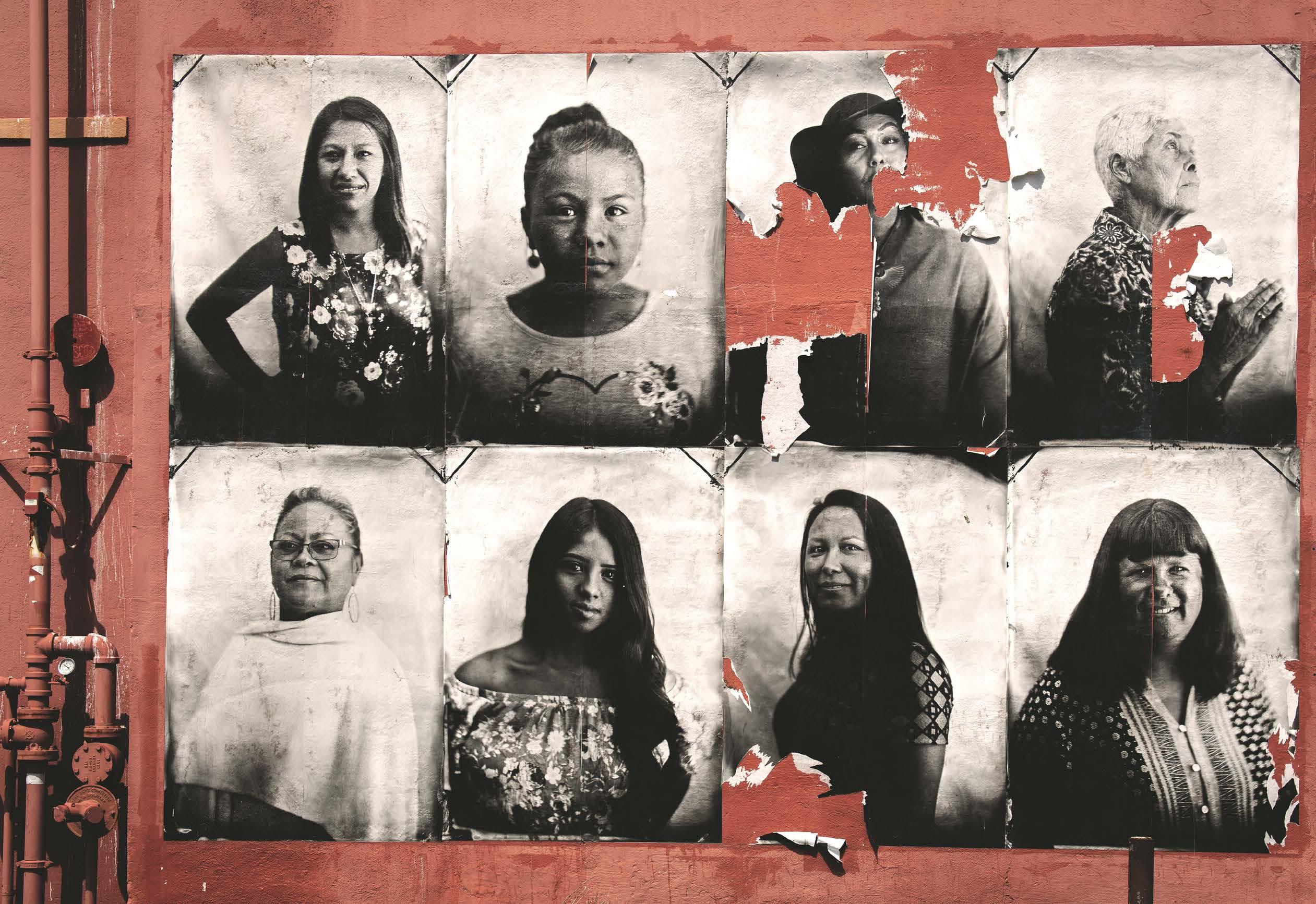
6 minute read
For Personal & Planetary Thriving
for personal & planetary thriving Humanity: Tapestry of Races
by Morella Devost, EdM, MA
Advertisement
What color are you? Is that a clear-cut answer for you? Because I sure as hell don’t know what color I am.
I’ve always been flummoxed by the race question in the US. It’s a de-facto inquiry on so many forms in this country — from university applications to job searches, government processes, and lord knows how many other places.
What is your race? I’ve never known how to answer.
You see, this isn’t a question that’s ever asked in Venezuela, where I’m from. I was born to a Venezuelan mom and a Vermonter dad. Truth is, most Venezuelans have no sense of “race,” save for perhaps the indigenous tribes that remain intact (and even then, I don’t think it’s as strong). For the majority of us, race is not a construct that informs our identity, because we are the product of a colonial process that was very different from that of the US.
In the Spanish colonies, a variety of terms arose to name the interweaving of races that began to emerge. “Mestizo” was the name for a person of mixed white and indigenous race. “Mulato” was the name for a person of mixed white and Black origins. “Zambo” was the term for a person born of Black and indigenous parents, or also sometimes the child of Black and mulato parents. And yet, over the course of centuries, these terms gradually disappeared from common use.
Interestingly, even though slavery and white domination existed in colonial times, race barriers were a lot more fluid in Venezuela because it was not the seat of a viceroyalty (like Colombia, Mexico, or Peru). Most colonists were unmarried Spanish men who wed locals, so the general population was a hodgepodge of mestizos, zambos, mulatos, and others. They formed the bulk of the independence armies (from 1810-1830), and by the time slavery was officially abolished in 1854, the vast majority of African descendants were already free, engaged in economic activity, and enjoying equal rights (which was decreed in 1811). From the 19thcentury on, the Venezuelan population was fundamentally multiracial. Over a handful of generations, as colors continued to blend, the idea of race became increasingly meaningless. I was 27 and applying to grad school at Columbia University when I first had to give the question “What is your race?“ serious consideration. Black? No. White? No. Hispanic? No. Native American? No.
How about all of the above? Is there a box for that?
This is all quite personal to me.
I can’t check the “white” box because I’d be denying so many levels of my existence. For one, I can’t look at my mother’s skin and honestly tell you what race she is. She calls herself café con leche (“coffee with milk”). Separately, choosing the “white” box would also negate the truth that I absolutely feel my African genes dancing whenever I hear Venezuelan drums. I know that beat in my bones, and it’s not “white.”
I can’t check the “Black” box either, because that’s just not who I am. My skin that turns lobster-red in the Venezuelan sun proves that I lack the melanin to qualify. Additionally, I also don’t want to deny the thick French, Spanish, and Flemish ancestry that runs in my veins.
I certainly can’t check the “Hispanic” box because that’s not a race. Hispanic lumps together an enormous variety of people, from the northern tips of Mexico to the edges of Patagonia. Furthermore, the word Hispanic essentially means “related to people who speak Spanish,” which includes Spaniards. What about the Peruvian Quechua who don’t speak Spanish? Are they Hispanic too? It makes no sense to me.
And how do I honor and acknowledge the indigenous from both North and South America in me? I wear my Algonquin beads with pride, a gift from an Algonquin elder I met years ago. And even though I grew up knowing I had more than one Native American and indigenous ancestor, I obviously can’t check the Native American box either.
Which box do I pick? More often than not, I check them all. Sometimes I check none of them, and move on.
So what’s my point?
I believe that the truth inside of me is also the truth of humanity. I don’t fit in a neat race box, just like we
can’t assume that anyone else fits the race box or race experience we expect simply based on the color of their skin.
I have a client who is a refugee from Africa. None of his experiences in the US match the stories of so many African Americans, and he gets anxious that people expect him to feel a particular way because of his skin color. So in our conversations, we’ve acknowledged that the colors of our skin carry with them some meaning in this country, even if they don’t tell our deeper stories. We can acknowledge and validate the centuries of pain many people have experienced, while still seeking to find what’s true within each of us.
The fact is, I can’t impose on myself a “white” identity that has no meaning to me simply because that’s how other people perceive me. And yet, I also can’t deny the fact that I benefit from the privileges my light skin affords me. What I can proudly claim is that I am a Venezuelan criolla (pronounced cree-oh-jah). It’s the equivalent of the word “creole,” but criolla/criollo in Venezuela has come to be synonymous with authentically, genuinely Venezuelan. Yo soy criolla.
I am a tapestry of interwoven colors, cultures, and flavors. I am the beats of the San Juan drums, the taste of hallacas, the crispness of arepas, and the fragrance of cacao. But I am also a Quebecois tourtiere, and the opening of the directions when I pray. I am a chant to the earth and the scent of Vermont wildflower fields.
Likewise, I want to be a part of the creation and celebration of the opulent tapestry of humanity. I want to see us recognizing our inherent oneness as a human race while exalting the beauty, richness, and diversity of the colors, stories, cultures, and experiences we each weave into it.

Photo by Tiko Giorgadze

It’s out of the love for that tapestry that I bristle at the word “anti-racism,” because I have also come to know that the prefix “anti” inherently elicits the energy of opposition and confrontation. This doesn’t mean I won’t stand up to biased, discriminatory, or outright hateful action. It also doesn’t mean that I don’t acknowledge the real pain racism still inflicts every day. But it does mean that I won’t stand for the energy of fighting other humans.
I want to stand for diversity. I want to stand for unity. I want to stand for justice and equality for all colors, all cultures, all walks of life, and all gender identities. I want to stand for education, for community, for compassion, and for forgiveness. I want to stand for us growing together through this, not tearing each other apart.
I am criolla. I am a tapestry. I stand for and I love the tapestry of human life we create together, even through
Photo by Tim Mossholder
the journey of helping each other heal the wounds of history and change the systems that oppress our brothers and sisters. Let’s stand together and weave the bright future we envision for our human race.
Morella Devost is a counselor helping her clients turn their deepest challenges into their greatest source of strength. After receiving two masters degrees in counseling from Columbia University, she became a Clinical Hypnotherapist, NLP facilitator, and Reiki Master. Morella is a VenezuelanVermonter working with people all over the world from her RVoffice as she travels the US with her family. She is the host of the Thrive With Morella TV-radio-podcast show. www.youtube.com/morelladevost thrivewithmorella.com www.facebook.com/ThriveWithMorella Instagram: @Morellad Facebook personal: @Morellad1 Twitter: @More_Joy







